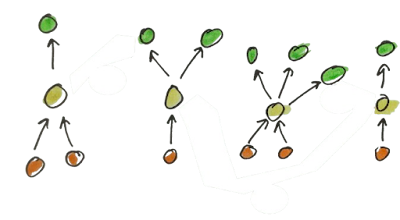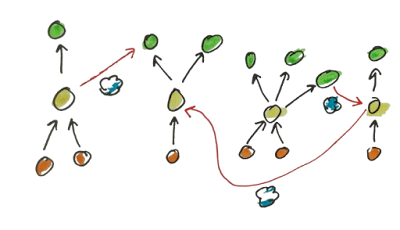Parte I, Parte II e Parte III.
Por que é que a aplicação da abordagem por processos falha?
- Foco excessivo em documentação e procedimentos. A norma é interpretada de forma literal, levando à criação de documentos redundantes apenas para "cumprir requisitos", o que torna o sistema burocrático sem melhorar verdadeiramente os processos.
- Mapeamento superficial ou inadequado dos processos. Ignorar o mapeamento e a análise inicial dos processos existentes resulta em lacunas não identificadas. Sem compreender totalmente as sequências e interacções, não se definem responsáveis claros nem pontos de controlo eficazes.
- Confundir departamentos com processos de negócio. Tratar funções departamentais isoladas como se fossem processos completos, em vez de gerir processos transversais que agregam valor do início ao fim. Ou seja, considerar Compras, Vendas e Produção cada um como um processo independente, sem mapear a ligação entre eles (como um pedido do cliente que atravessa várias áreas), o que impede a visão sistémica e a optimização do fluxo de trabalho.
- Ossificação ou cristalização dos processos, o que leva à estagnação. Uma abordagem rígida, sem revisão contínua, deixa os processos estagnados no tempo. Dificulta-se a inovação e a adaptação a mudanças do mercado ou a requisitos dos clientes.
O que é que a abordagem sistémica à gestão pressupõe e falha na sua aplicação?
- Não há relação entre os objectivos da empresa e os objectivos dos processos. Explico melhor, dizer que o somatório dos objectivos dos processos é igual aos objectivos da empresa é não considerar a emergência, uma propriedade fundamental dos sistemas e que o povo traduz por "o todo é mais do que a soma das partes". Ou seja, optimizar o todo, (a organização), implica subordinar alguns processos a outros, daí a clássica imagem dos silos e deste exemplo que uso há anos:
Lembro-me de exemplos de empresas em que o departamento de Comercial ganha vendas não lucrativas porque as vendas são boas para o bónus departamental, mesmo que não sejam lucrativas. O argumento é: isso não é problema meu!
Ou o departamento de Compras que alcança grandes bónus com as poupanças obtidas, enquanto o resto da empresa é atormentada por problemas de qualidade, atrasos ou erros dos fornecedores. O argumento é: isso não é problema meu!
Ou o departamento de Produção tão focado no cumprimento dos objectivos de eficiência que não se preocupa com os acordos com os clientes a nível de prazos de entrega. O argumento é: isso não é problema meu!
Ou o cliente que negociou uma entrega especial, pagou mais por ela, contratou uma equipa para receber e aplicar a entrega e, em seguida, ... já adivinharam, a entrega não é realizada porque o departamento da Logística é valorizado por minimizar os custos de envio e está à espera de mais encomendas para consolidar a entrega. Já sabem qual o argumento ... isso não é problema meu!
A abordagem sistémica à gestão pressupõe definir onde se quer chegar, perceber que existe uma coisa chamada obliquidade, e formular o caminho para lá chegar. Os resultados de hoje resultam dos processos actuais, se queremos resultados futuros diferentes temos de fazer alterações nos processos para criar os processos do futuro, processos diferentes dos processos actuais (pelos alguns deles serão diferentes).
A abordagem sistémica à gestão trabalha com a abordagem por processos através desta representação metafórica:

%2010.19.jpeg)
%2010.20.jpeg)

%2016.18.jpeg)
%2010.02.jpeg)
%2011.44.jpeg)
%2021.48.jpeg)
%2008.03.jpeg)
%2016.15.jpeg)
%2016.15.jpeg)
%2013.46.jpeg)
%2014.22.jpeg)
%2006.18.jpeg)
%2014.33.jpeg)



























%2006.21.jpeg)












